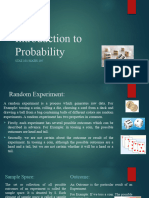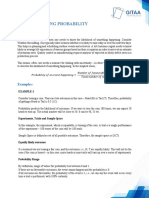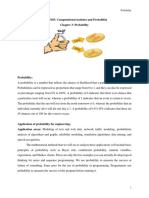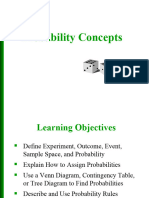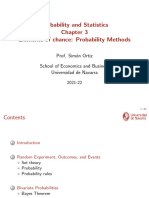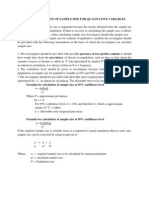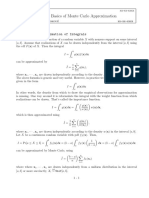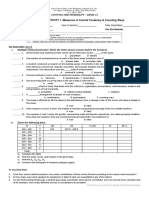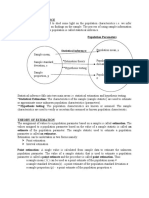0% found this document useful (0 votes)
6 views31 pagesProbability
The lecture introduces the concept of probability, defining key terms such as sample space and outcome, with examples including rolling dice and flipping coins. It discusses calculating probabilities for various scenarios, including skydiving and selecting items from a box, as well as concepts of independent and mutually exclusive events. Additionally, it covers Venn diagrams, De Morgan's Law, and provides examples of infinite sample spaces.
Uploaded by
lodudheerajCopyright
© © All Rights Reserved
We take content rights seriously. If you suspect this is your content, claim it here.
Available Formats
Download as PPTX, PDF, TXT or read online on Scribd
0% found this document useful (0 votes)
6 views31 pagesProbability
The lecture introduces the concept of probability, defining key terms such as sample space and outcome, with examples including rolling dice and flipping coins. It discusses calculating probabilities for various scenarios, including skydiving and selecting items from a box, as well as concepts of independent and mutually exclusive events. Additionally, it covers Venn diagrams, De Morgan's Law, and provides examples of infinite sample spaces.
Uploaded by
lodudheerajCopyright
© © All Rights Reserved
We take content rights seriously. If you suspect this is your content, claim it here.
Available Formats
Download as PPTX, PDF, TXT or read online on Scribd
/ 31

